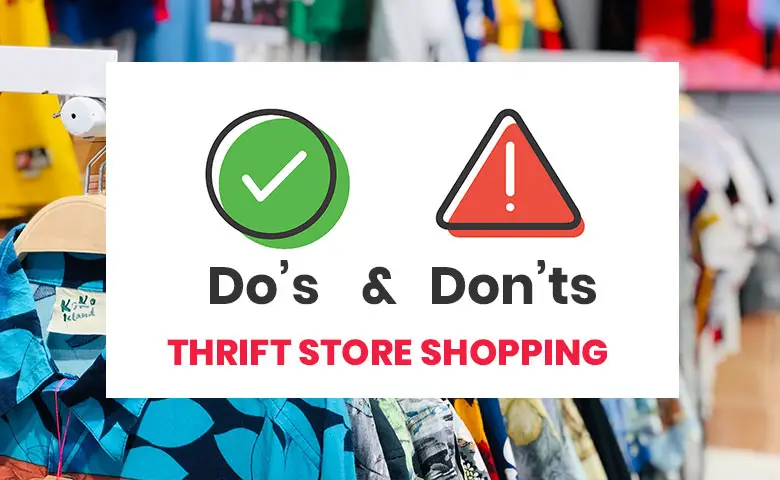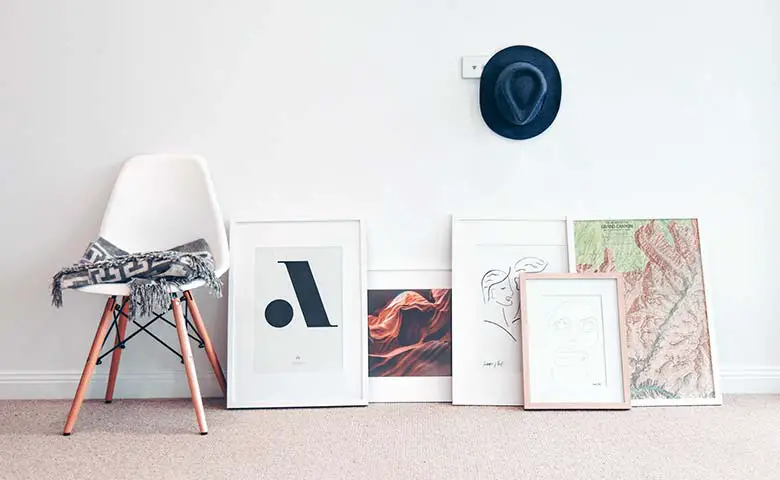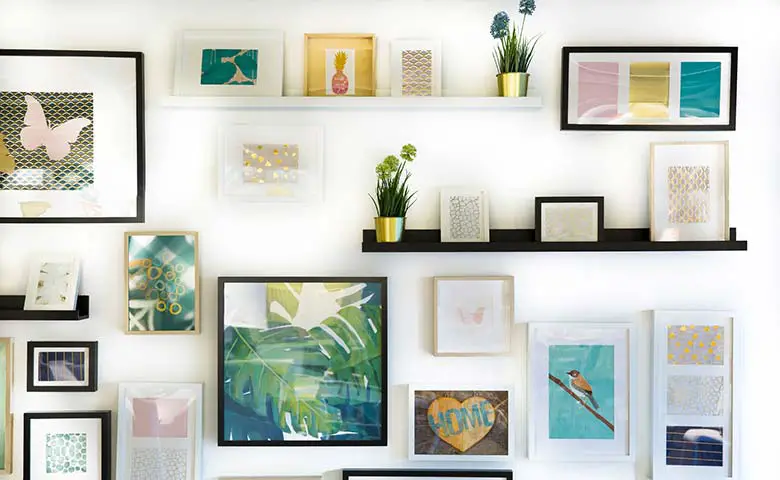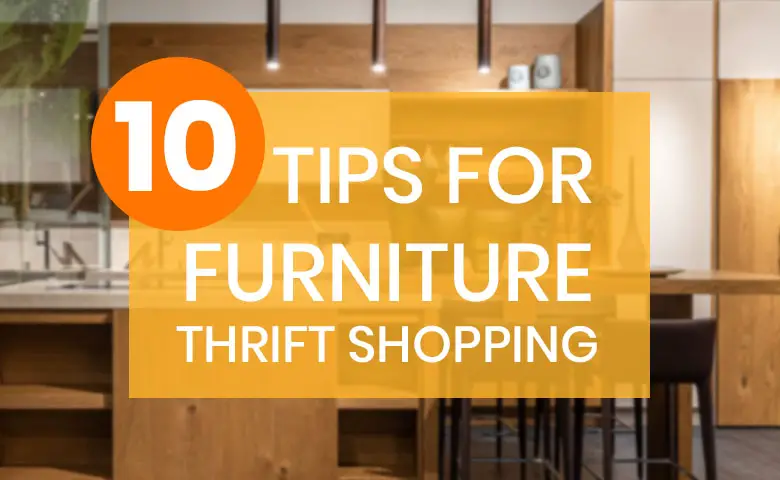Do's & Don'ts of shopping at Thrift Store

One can easily get overwhelmed by a semi organized or unorganized bunch of random pieces of products shelved inside a thrift store. By following a set of guidelines for different categories of products, it should be easier for us to make the best bang for buck and avoid having space eating garbage products that have no place to keep inside our home or garage.
On tips on Don’ts on thrift shopping, avoid doing impulse purchases. Make an assessment on the style and theme of the product at hand with that of your home interior and then decide to buy or skip the product. One also be aware of the space and storage requirement for the products bought at thrift stores. One also needs to be ready to throw out the existing products at home to make room for new one.
Table of Contents
Furniture

When buying furniture, check for build quality and construction by thoroughly checking out the product, not just the surface of the product. It would also be a good idea to do a touch test to get a feel for the build material of the product. You can assess if the product is made from solid wood, veneer or plywood by touching the furniture surface.
Don't make impulse purchases on furniture based on surface finishing of the product. You should also avoid buying furniture that doesn't go well with the theme and style of your home interiors. Make sure to have enough space to keep the new furniture or be prepared to donate or shelve existing furniture to make room for new one.
Lamps
 Lamps are generally plenty available in thrift stores. When choosing the lamps, we’ve to see that the lamps match the home interior decorations and go well with the existing decor items. One should test the lamps to make sure they’re in working condition. For the lamps, the lamp connecting cord and any electronic intricacies must be checked to see the compatibility with existing electrical works at your home.
Lamps are generally plenty available in thrift stores. When choosing the lamps, we’ve to see that the lamps match the home interior decorations and go well with the existing decor items. One should test the lamps to make sure they’re in working condition. For the lamps, the lamp connecting cord and any electronic intricacies must be checked to see the compatibility with existing electrical works at your home.Art Frames
 When buying art frames to be hung at home, we need to make sure there is plenty of space on the wall to place the art frame. If it's to be placed on a piece of furniture, then we also need to consider the size and placement on the surface of the furniture.
Don’t buy the art frames, if you’re not into diy crafts or painting. It might be tempting to buy a bunch of it and expect it to do everything in one go. But like wine, art takes patience, time and time to maturity to make it worthwhile.
When buying art frames to be hung at home, we need to make sure there is plenty of space on the wall to place the art frame. If it's to be placed on a piece of furniture, then we also need to consider the size and placement on the surface of the furniture.
Don’t buy the art frames, if you’re not into diy crafts or painting. It might be tempting to buy a bunch of it and expect it to do everything in one go. But like wine, art takes patience, time and time to maturity to make it worthwhile.Kitchen Utensils
Kitchen utensils are often left to charity and donated to Goodwill stores. Buy if you can find a neat set of utensils that match in style. If not, it would be better to buy it from departmental stores where you can find a fresh stock of decent designed kitchen utensils for your everyday needs.
Craft Supplies
When getting craft supplies from thrift stores, you’ll probably end up looking at misfit tools, paintbrush and accessories. If you’ve already got an idea of what you’re planning to make or build, then having a list of requirements helps narrow down on what to look for and what to buy. If not, you’ll end up buying a different set of generalist tools that doesn't really help in getting things that you want to make or build. If you’re getting started on craft without having essential tools like scissor, ruler, hot glue, fast gum etc, then it would be wise to make a list of essential tools and then find the right accessories at a thrift store.
Clothes
Clothes are often purchased on impulse at thrift stores. More often than not, you’ll find a cloth that sufficiently doesn't fit, but like the design and fabric of the dress and end up filling up the shopping cart.
Home Decor items
 Similar to buying clothes, we should avoid impulse purchases on home decor items at thrift stores. We also need to keep in mind home interior design, theme and taste to make sure, any product you purchase feels like it belongs to your home design when it's brought to your home.
Similar to buying clothes, we should avoid impulse purchases on home decor items at thrift stores. We also need to keep in mind home interior design, theme and taste to make sure, any product you purchase feels like it belongs to your home design when it's brought to your home.
By following the above guidelines, it should help you avoid having unnecessary products that might be available on the cheap, looks really good but doesn't really fit filling up your shopping cart. It should improve your bottom line and make thoughtful purchases based on your needs and wants.


